May 2013
|
With no collectors meetings or interesting
markets to go to, the decks had to come from auction sites again. The
Dutch auction site didn't have any interesting decks, but Ebay always
has and this time it had the perfect deck in store.
A divine sign or just coincidence, but this month a vintage Cuban
souvenir deck arrived about 10 days before Joop would leave for a week
to....... Cuba! His trip had already been planned months before and the
main purpose was to visit the Museo de Naipes in Havana and donate 50
decks to the museum.
Joop had also contacted a number of artists with the
request to donate a signed and specially dedicated deck to the museum as
well and in the end the donation consisted of 60 decks in total. Our
donation, with decks from all decades between 1870 and 2013, was highly
appreciated and because the artist decks hadn't been announced, they made a
wonderful surprise gift, which was equally appreciated by Laritza
Siméon, the director of the museum.
|
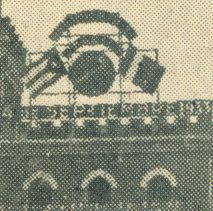
|
| So you'll understand, why we couldn't decide in favor
of any
other deck than this one as "Deck of the Month". |
The deck is
described in the Encyclopedia of American Playing Cards as SCU3, "Unknown Cuban
manufacturer c 1930". But the enlarged detail above (from the 9 of Clubs) clearly
shows that it can be dated a few years later, probably 1934. We'll elaborate on
that further down this page.
All the cards have
a picture with a Cuban scene, but most of them show sites in Havana. Except for
a two day trip to Viñales, Joop would be in Havana and he thought it would be
interesting to see if some of these sites still existed and how they had
changed. For those who are curious to see how an 80 years time difference has
affected these scenes: CLICK HERE!
Until 1959 the
island had always been visited by American tourists and this souvenir deck was
definitely aimed at them too.
All the captions are in English.
|
"Wall
Street" was probably the nickname for the Obispo street, as many
foreign, but mostly American banks, had their offices there.
|
|
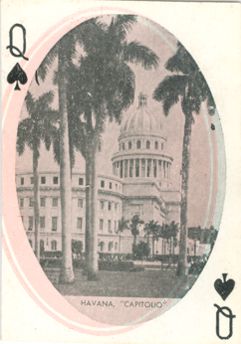
The "Capitolio"
was modeled after the Capitol in Washington and it is still a government
building, housing the representatives. |
|
These old
houses are not typical for Santiago de Cuba only. Similar houses can also be
found in other Cuban cities, like...... Havana.
|
|
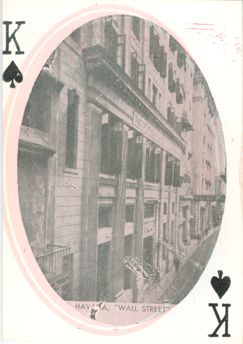
|
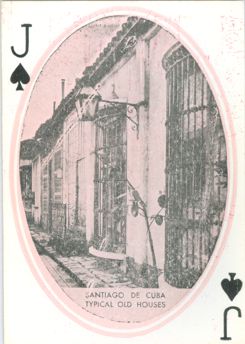
|
|
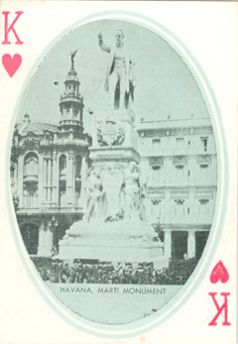
|
José Marti -also referred to as the
"Apostle of Cuban Independence"- was a poet and essayist, but
also a revolutionary philosopher and political theorist. He was a key
figure in the Cuban War of Independence against Spain and died in
military action in 1895, at the age of 42. |
|
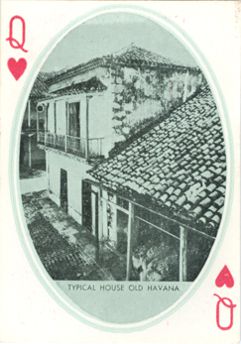
|
|
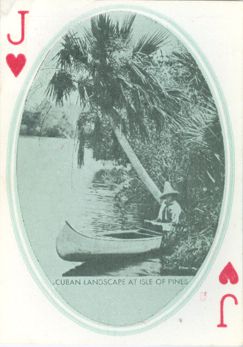
|
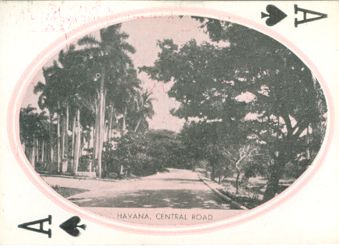 |
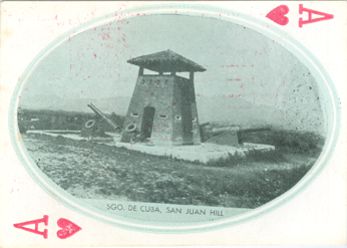
|
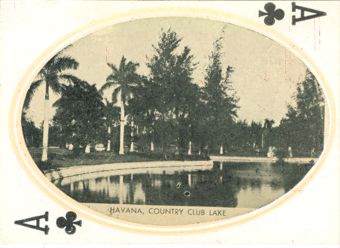 |
|
CLICK
the Aces to see all the numeral cards of that suit. |
|
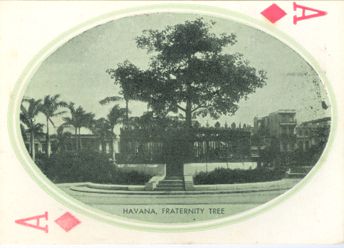
|
|
|
|
|
As you can see here, the publisher has cut some corners and has used the same
picture on the
Ace and King of Clubs. But this is not the only one. In total there are 6
pictures, which have been used on two cards. You'll find exactly the same
picture of the "Havana Old Cathedral" on the Queen of Diamonds and
the 5 of Spades; the "Havana Old Belén College" on the Joker and the
5 of Clubs; the "Havana, Presidential Palace" on the Queen and the 3
of Clubs; the "Sta. Clara, Trinidad Valley" on the Jack and 2 of
Clubs and the "Santiago de Cuba El Cobre Sanctuary" on the Jack of
Diamonds and the 4 of Spades.
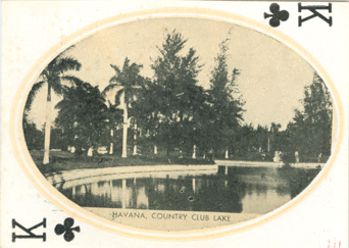
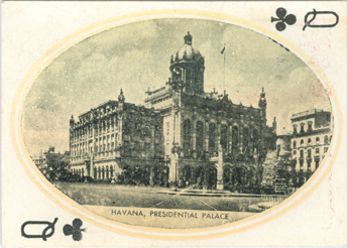
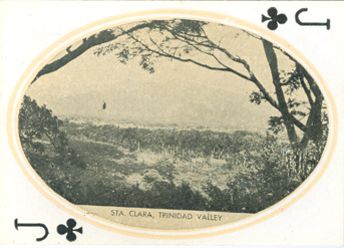
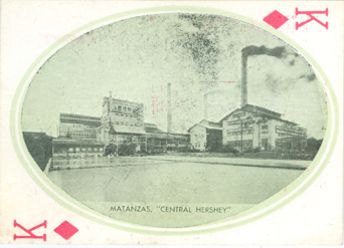
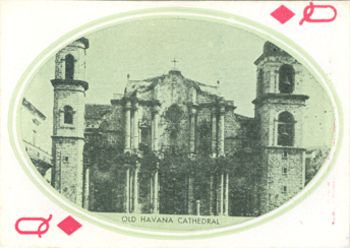
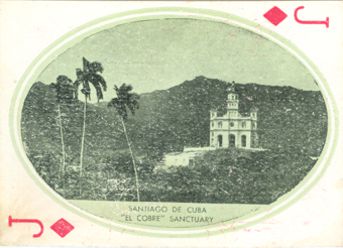
The design of the backs is interesting, as it shows
Uncle Sam and an evenly symbolic Cuban, with flags of both nations. This
design and the date on the 9 of Clubs, would suggest that the deck was
published to illustrate, maybe even celebrate, the Treaty of Relations between
the U.S. and Cuba, as part of the "Good Neighbor policy" toward Latin
America, that president Roosevelt had proclaimed in 1934. Most of the Platt
Amendment provisions were repealed in this new treaty. These had restricted Cuba in the conduct
of foreign policy and commercial relations and had also demanded that Cuba
would sell or lease land to the United States necessary for coaling or the
development of naval stations. But Guantanamo Bay obviously wasn't part of the
deal in that new Good Neighbor policy and has been under US control since
1903.
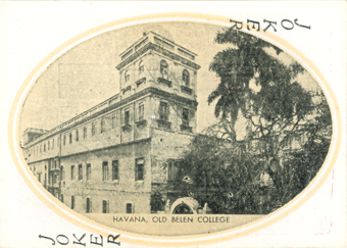
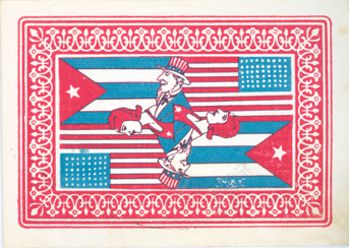
The deck consists
of 52 cards and a joker.
The cards are made of thin card and they have square corners.
The used material for the box and cards and the poor cutting could confirm a Cuban
origin.
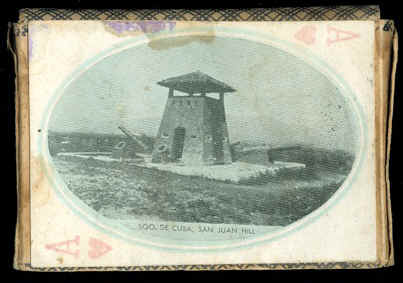
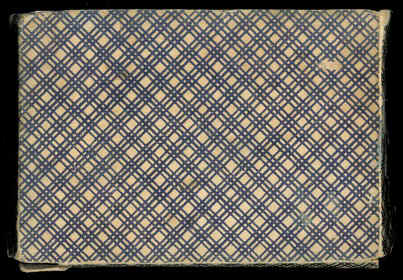
BACK TO PRESENT MONTH




















